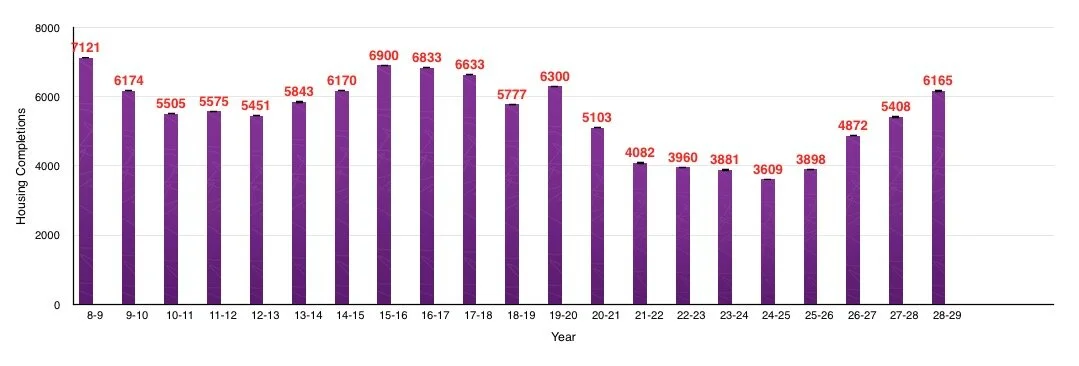TAN 1 and Joint Housing Land Availability Studies are dead. Long live housing delivery.
You need look deep into the Welsh Government website to read its obituary. Announced without fanfare, press release or even Ministerial Twitter chirp. The world has other pressing issues momentarily. I suspect the strategy was purposefully to change it nice and quietly, under the radar.
Dismantling began in July 2018 and breathed its last on 26 March 2020. It spawned a couple of revised pages of PPW and 227 pages of new guidance in the Development Plan Manual, including a new approach of monitoring housing delivery against the LDP housing trajectory. The “stick” where housing isn’t delivered as per the housing trajectory? Two yeas of monitoring and then the LPA chooses if its to review the LDP early.
Ill state controversially here - some readers will no doubt think you work for “them” so you would, that TAN 1 and the PPW 5 year housing land supply requirement broadly worked, especially where a Development Plan was uptodate and robust with viable, deliverable sites. Too many current Local Development Plans don’t do that. The perception was that TAN 1 meant sites that communities didn't envisage being developed were released. I would argue, partly at least, that once TAN 1 was applied, some Development Plans began to fall apart at the seams.
Local Development Plans list of failings is/was broad, from poor early communication of vision and lack of genuine community buy-in, woeful consultation, constrained and/or unviable sites in the wrong places (in some cases “least worst” additional sites had to be allocated very late to make numbers up to get through Examination), overly prescriptive targets, other policies and legislative requirements that make delivering even allocated sites difficult. Not to mention unattainable windfall assumptions that increase pressure on the edges of settlements.
It further worked against Councils without a Development Plan and thus no planned housing land supply. Here the presumption in favour of sustainable development in accordance with the development plan and other material considerations indicated permission should be granted. The is of course an answer to that - get a Development Plan. Those communities in Councils without an LDP find themselves in no different a position today than they did when TAN 1 was in force.
Few would disagree with the Ministers ideal that by the time a planning application is submitted, communities should know with some certainty where, how much and when housing (and other) development will take place. An uptodate Development Plan is the linchpin of the updated guidance to achieve this. Only time will tell if the new tranche of LDPs deliver this idealistic view of a Plan-Led system or whether LPA’s have the skills, resources and appetite to constantly monitor and review. I already foresee monitoring reports for 2019-2020 and 2020-21 writing under delivery for these year off under “Covid-19”. However, by late 2021, 2 years of under-delivery will start to bite and the new system envisages LDP’s being reviewed.
The timing of the change in PPW is ever more remarkable for that. As I write, house builders sites remain mostly closed with some expected to re-start with socially distanced working in the next couple of weeks, staff in housebuilding and supporting services are furloughed, estate agents are shut and the housing market has all but stopped. Signs are, at best, of a very gradual move out of the lockdown perhaps by summer, perhaps later. Its almost certain many months of un and under-delivered housing will follow. Calls are already being made for Welsh Government to put measures in place to support an early economic recovery and to ensure much-needed housing can be delivered in the short term and in advance of the latent delay of adopting new and reviewing LDPs.
When and how the economy begins to recover - housebuilding being a key component of economic activity for planning purposes - and the possible effects of a recession on housebuilding and achieving the social and economic benefits of delivering homes is a different matter.

